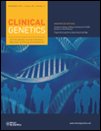Two cases of prenatal diagnosis of a satellited Yq chromosome
Abstract
Accurate interpretation of chromosomal variants is essential in prenatal diagnosis in order to distinguish polymorphisms from potential pathology in the fetus. This paper reports intrauterine diagnosis of a satellited Yq in two unrelated families. The 29-year-old consultand in Case A sought prenatal diagnosis because of a maternal family history of Down syndrome. Case B was studied because of maternal age of 37. GTG banded chromosome analysis of cultured amniotic fluid cells from both cases revealed a 46, XY chromosome constitution with extra material present on the Yqter. This was interpreted to be satellite material. QFQ, CBG and AgNOR staining were performed. The material in question proved to be AgNOR positive, indicating that it was transcriptionally active for ribosomal RNA production during the last cell cycle. In addition, frequent satellite association between the Yqter and other acrocentric chromosomes was noted. These findings confirmed the initial interpretation. Other family members were studied and an AgNOR positive Yqs chromosome was confirmed in normal males in three generations of both families. The Yqs chromosome observed in the fetal cells was therefore considered a normal variant. The outcome of pregnancy in Case A was a phenotypically normal male. Case B had not delivered at the time of this writing. The origin of this satellite material on the Y chromosome is considered.




